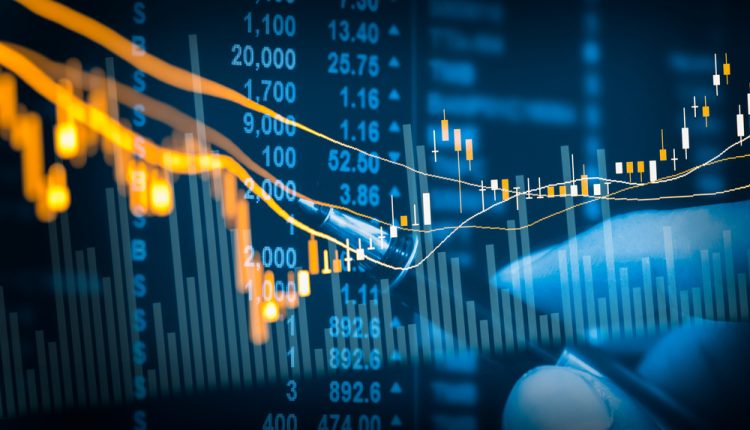In the world of investing and trading, one of the most important challenges is predicting market movements. Understanding where the market is headed can give investors a significant edge in making decisions about buying or selling assets. While there’s no crystal ball to foresee the future, economic indicators are essential tools that help investors and analysts understand the current state of the economy and predict its likely direction.
Economic indicators are statistics that represent various aspects of a country’s economy, offering insights into areas such as growth, inflation, employment, and consumer confidence. When analyzed correctly, these indicators provide valuable clues about future market movements and help shape investment strategies. In this article, I’ll explore the key economic indicators that investors use to predict market trends, how they influence financial markets, and how you can incorporate them into your decision-making process.
What Are Economic Indicators?

Economic indicators are data points that reflect the health and performance of a country’s economy. They are typically released on a regular basis by government agencies, central banks, or private organizations, and serve as a barometer for economic conditions. These indicators are classified into three main categories:
-
Leading Indicators: These indicators predict future economic activity. They typically change before the economy does, providing early signs of what may happen in the near future.
-
Lagging Indicators: They reflect past economic activity and tend to change after the economy has already moved in a particular direction.
-
Coincident Indicators: These indicators move in sync with the economy. They give real-time insight into the current state of the economy.
By analyzing these indicators, investors can make better-informed predictions about the economy’s future trajectory and adjust their investment strategies accordingly.
Key Economic Indicators for Predicting Market Movements
Let’s take a look at some of the most widely followed economic indicators and how they can help predict market trends.
1. Gross Domestic Product (GDP)
What it is: GDP is the total monetary or market value of all the finished goods and services produced within a country in a specific time period. It’s considered the broadest measure of economic activity.
Why it matters: GDP growth indicates a growing economy, which generally leads to higher corporate profits, increased consumer spending, and a positive outlook for the stock market. Conversely, negative GDP growth can signal a recession or economic slowdown, which can lead to market declines.
How it impacts the market: A strong GDP report typically boosts investor confidence, as it suggests economic expansion and stability. However, negative GDP growth, particularly when it’s sustained over several quarters, can lead to declines in stock prices and other asset classes as it signals economic contraction.
2. Unemployment Rate
What it is: The unemployment rate of people in the labor force who are actively seeking work but are unable to find employment. It’s one of the most important indicators of economic health.
Why it matters: High unemployment indicates an underperforming economy, where fewer people are employed, leading to lower consumer spending and a decline in economic growth. Conversely, low unemployment typically signals a strong economy, where people have jobs and spend more money.
How it impacts the market: A rising unemployment rate can signal that the economy is slowing down, which may lead to lower consumer spending and stock market declines. On the other hand, a decreasing unemployment rate indicates a recovering or strong economy, which can drive markets higher.
3. Consumer Price Index (CPI)
What it is: The CPI measures the average change over time in the prices paid by consumers for goods and services. It’s a key gauge of inflation.
Why it matters: Inflation directly impacts purchasing power. When prices rise too quickly, consumers can buy less with their money, which may lead to slower economic growth. The central bank may also respond to rising inflation by raising interest rates, which can affect the stock market.
How it impacts the market: When inflation is rising faster than expected, it can trigger fears of rising interest rates and reduced consumer spending, which may negatively impact the stock market. On the flip side, low or falling inflation can signal a stable economic environment, which is generally favorable for market growth.
4. Interest Rates (Federal Reserve Rates)
What it is: Interest rates set by central banks, such as the U.S. Federal Reserve, control the cost of borrowing money. Central banks raise or lower rates to influence economic activity, particularly inflation and employment.
Why it matters: When interest rates are low, borrowing is cheaper, which encourages spending and investment. High interest rates, however, make borrowing more expensive, which can reduce consumer and business spending and slow down economic growth.
How it impacts the market: Changes in interest rates have a profound effect on financial markets. When interest rates are raised, stocks may fall as investors expect slower economic growth and lower corporate profits. Conversely, when rates are lowered, stocks can rise due to the lower cost of borrowing and increased economic activity.
5. Retail Sales
What it is: Retail sales data measures the total sales at retail stores and is an important indicator of consumer confidence and spending habits.
Why it matters: Consumer spending accounts for a significant portion of economic activity. Strong retail sales indicate that consumers are confident in the economy and are willing to spend, which is positive for growth. Weak retail sales, however, may signal a slowdown in consumer confidence and potential economic trouble.
How it impacts the market: Rising retail sales can indicate a healthy economy, boosting investor confidence and potentially driving up stock prices. On the other hand, falling retail sales might suggest weakening demand and could lead to concerns about economic growth, which can negatively affect stock prices.
6. Manufacturing Index (PMI)
What it is: The Purchasing Managers’ Index (PMI) is a survey of purchasing managers in the manufacturing sector, measuring business sentiment and economic activity in that industry.
Why it matters: The PMI is a leading indicator of economic health, as it reflects the performance of the manufacturing sector, which is often seen as an early indicator of future economic activity. A PMI reading above 50 suggests that the economy is expanding, while a reading below 50 signals contraction.
How it impacts the market: A strong PMI report can signal that businesses are confident and expanding, which is often good for stocks. A weak PMI reading, however, may suggest that manufacturing activity is slowing down, which can raise concerns about the broader economy and lead to market declines.
Using Economic Indicators to Predict Market Movements
Understanding and using economic indicators effectively requires more than just watching the headlines. Here are some tips for incorporating economic indicators into your investment strategy:
1. Monitor Trends, Not Just Data
It’s important to track the long-term trends in economic data rather than focusing on individual data points. A single monthly report might not tell the whole story, but tracking the trajectory of key indicators like GDP, unemployment, and inflation over time can give you a better understanding of the economy’s direction.
2. Consider the Bigger Picture
Economic indicators are interconnected. A rising CPI might lead to higher interest rates, which could impact consumer spending and corporate profits. It’s important to consider how different indicators affect one another and to keep an eye on any potential ripple effects.
3. Don’t Ignore Market Sentiment
Economic data doesn’t always dictate market movements. Investor sentiment, geopolitical events, and other factors can also influence market trends. Be sure to balance economic indicators with an understanding of broader market conditions and sentiment.
4. Use Leading Indicators for Early Signals
Leading indicators, like the PMI and retail sales, can provide early clues about where the economy is headed. While they’re not always perfect, they can help investors anticipate market movements before they happen. Be sure to use these indicators as part of a comprehensive strategy rather than relying on them in isolation.
Conclusion: Economic Indicators as Tools for Smart Investing
Economic indicators are indispensable tools for understanding and predicting market movements. By paying attention to key data points like GDP, interest rates, inflation, and unemployment, investors can gain insights into the health of the economy and adjust their strategies accordingly. While no indicator is foolproof, using a combination of leading, lagging, and coincident indicators provides a fuller picture of the market and its future direction.
In the fast-moving world of financial markets, having a deep understanding of economic indicators can provide investors with an edge—helping them make more informed decisions and navigate the complexities of the market with greater confidence. So, whether you’re a seasoned investor or just starting out, be sure to keep these powerful tools in your toolkit as you work to predict market movements and achieve your financial goals.
